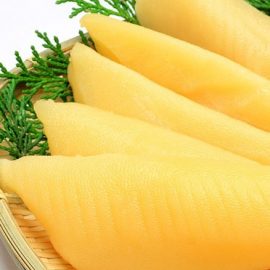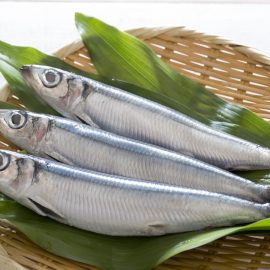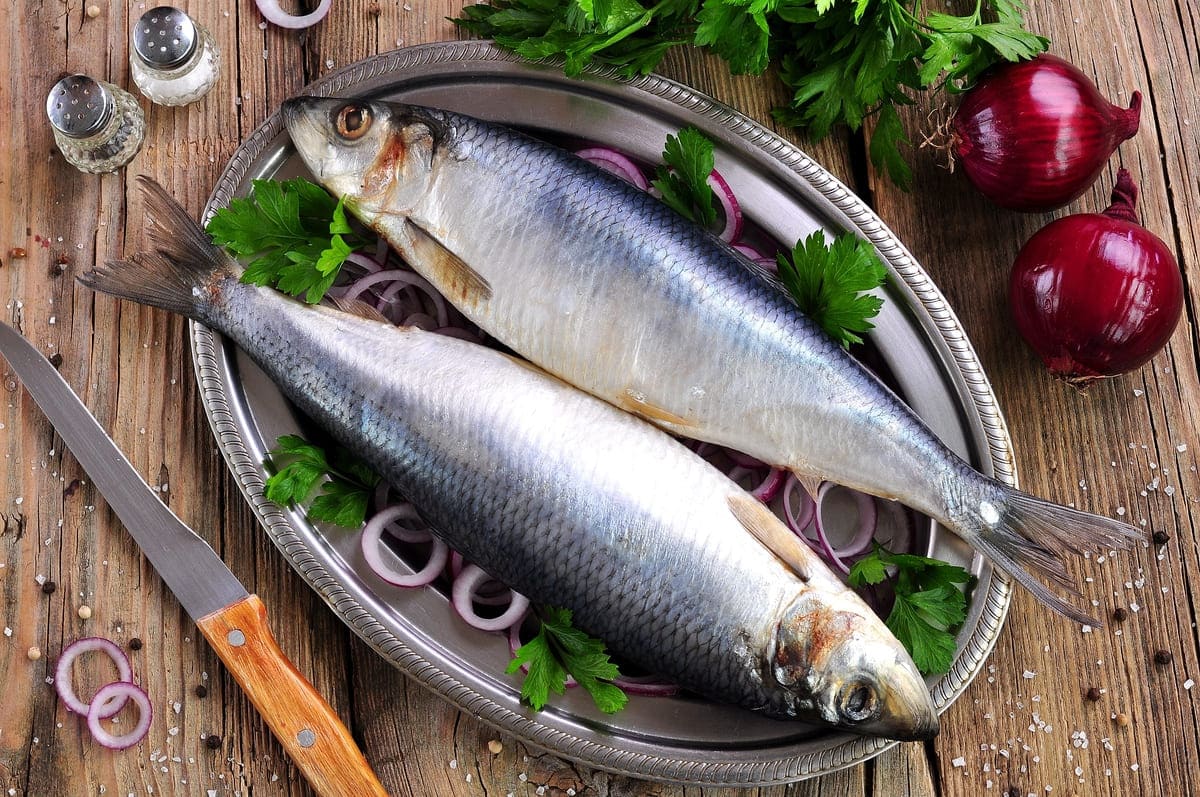
Introduction to Hake
Hake (family Merlucciidae) is a common saltwater fish found in temperate and subtropical waters across different world regions. It is highly sought after by commercial fisheries due to its mild taste and high-value white flesh while also being praised for its sustainability and high-quality nutrition.
With over thirty hake fish species, the two most commonly found in the northeastern Atlantic Ocean are the red hake (Urophycis chuss) and the white hake (Urophycis tenuis).
Description
Hake is a fish with the same taxonomic order as cod, hake, whiting, silver hake, and ling. It is low in fat but high in protein, making it a highly nutritious seafood option. Its mild flavour appeals to many palates, and its versatile texture allows for various cooking methods.
Hake has been used for centuries in classic fish dishes such as salads, stews, casseroles, and fish and chips. In recent years, it has also become a popular renewable seafood option due to its wide range of habitats, nutrient-rich qualities, and availability in both wild and farm operations.
Physical Characteristics
Hake possesses an elongated, slender body with a large head and long, thin bodies with a particular type of barbel in their chin, helping them search for food. Hake also has large, wide eyes and sharp teeth.
Hake are bony fish with a single long dorsal fin running along the back. They have a broad thermal range and live in warm and cold seas.
Habitat
Hake is also known as hakes, demersal fish, and groundfish. They inhabit a wide variety of marine and estuarine habitats, from shallow coastal waters to depths of up to 1,500 meters.
Hake prefers habitats with a rocky or sandy substrate accompanied by a strong current. These fish are commonly found in areas with varying temperatures, from 2-25 degrees Celsius, and typically inhabit temperatures between 14-16 degrees Celsius.
Ideal salinities are higher than 150 psu, but hake can also thrive in lower salinities. Mud and sediment on the ocean floor provide ideal conditions for hake, and they typically inhabit areas with partially mixed waters.
In the warmer months, Hake fish are abundant in near-shore areas and the continental shelf, where they feed on various fish, octopus, squid and other organisms. If overfished, they can suffer severe reductions in available habitat, putting their population at risk of decline.
Distribution of Hake Fish Stocks
Hake fish live mainly on the coast of North America, the coast of Brazil, and throughout the Mediterranean Sea. In the Atlantic Ocean, these fish can be found on the east coast of North America from Canada to Argentina and from the United Kingdom to Senegal.
In the Pacific Ocean, they are most commonly seen along the coasts of Central and Northern Chile, off California’s shores, and off Japan’s coasts. They are also found off the coasts of Alaska to Chile and from Japan to New Zealand. This species also has a wide distribution range in the Indian and Antarctic oceans.
It is a high-demand fish commercially fished and farmed in aquaculture systems, with total catches in 2017 reaching 175,000 metric tons.
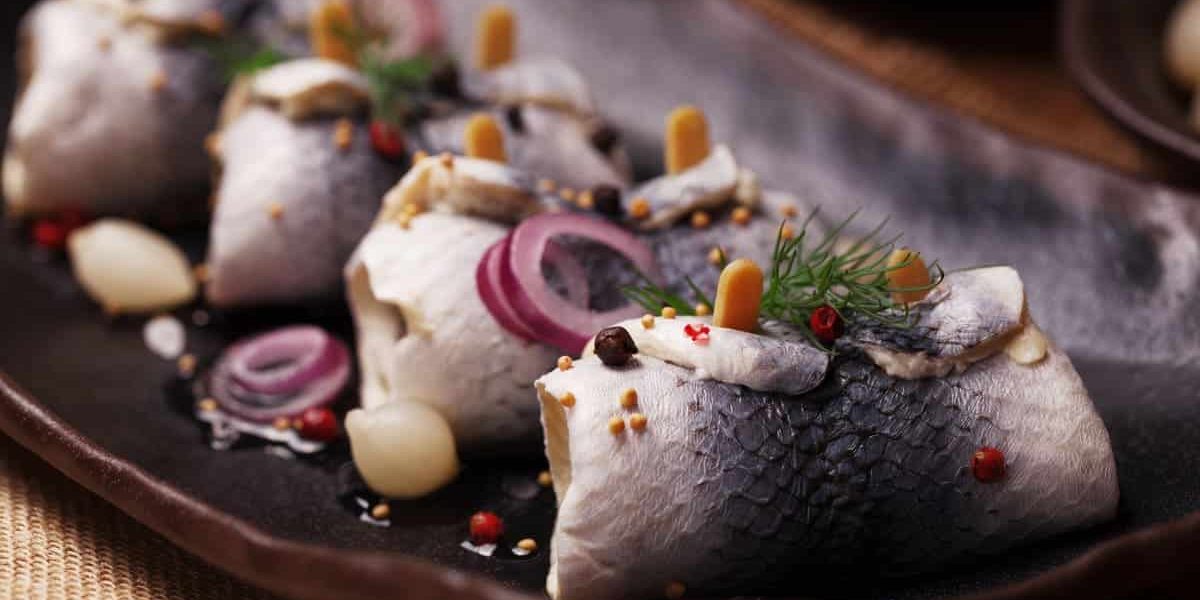
Fisheries and Uses
Hake has long been used for various purposes and has fed humans for centuries for food, oil, and fertiliser. It is a popular fish ingredient in dishes such as Fish and Chips or Bouillabaisse due to its delicate flavour and flaky texture. It is also highly valued in aquaculture, with large quantities of fish bred on fish farms for a steady and reliable supply.
Due to the heavy fishing of the species, the sustainability of hake fisheries has become a cause of concern. Several countries are now implementing quotas and other conservation measures to ensure the abundance of the species.
Population and Conservation
The populations of hake fish generally show no signs of being depleted. In the Mid-Atlantic, New England and West Coast of North America, the Monterey Bay Aquarium’s Seafood Watch ranks hake fisheries as a Good Alternative, meaning these fisheries are well-managed and aren’t overfishing stocks.
The European Fisheries Management Organization (EMFF) has implemented measures to manage hake fisheries in Europe sustainably. Fisheries for hake in Europe are certified under the Marine Stewardship Council (MSC) regulations and approved by the MSC as sustainable over 25 times.
The FAO monitors hake catches from countries in the South West Atlantic, with multiple countries reporting catches of more than 100,000 tonnes per year. The Commission for the Conservation of Antarctic Marine Living Resources (CCAMLR) has also implemented various measures to ensure sustainable management of hake in the Southern Ocean.
These regulations and certifications from the EMFF and MSC help to ensure the sustainability of hake fisheries. As long as these regulations remain in place, hake populations will stay healthy and sustainable for many years.
Conservation Status
Hake is a commercially relevant species and is particularly vulnerable to overfishing due to its growth rate and relative ease of catch. To prevent the depletion of hake and other fish stocks, governments, fishers, and conservationists have implemented a range of measures to ensure the sustainable management of fisheries. These include restrictions on fishing practices, such as banning certain types of nets, restricting fishing seasons, and setting quotas for fishers.
Sustainable Fishing Practices
Hake is harvested mainly by trawls and gillnets, where the gear is dragged through the water column or placed on the seabed to entangle the fish. Improved trawls that provide reduced bycatch and increased selectivity have become popular in sustainable fisheries. It is common to use hooks and lines for recreational fishing on shore.
The potential for bycatch of other species and juvenile fish is a significant concern with hake fishing. Closed areas, gear modifications (lines instead of nets) and vessel monitoring systems help reduce bycatch and promote sustainable fishing practices.
Hake’s Diet
Hakes are opportunistic predators and scavengers, feeding on small fish, crustaceans, molluscs, euphausiids, and cephalopods. Most of their diet is protein-based, but they can occasionally supplement their animal proteins with plant-based materials like phytoplankton and algae.
Hake hunt primarily during the day, and hake can consume up to 20% of their body weight in a single day, one of the highest consumption rates among fish. As an adaptive species, the hake has adapted its diet to its environment. The fish consumes various prey items, such as diatoms, copepods, mysids, amphipods, and euphausids.
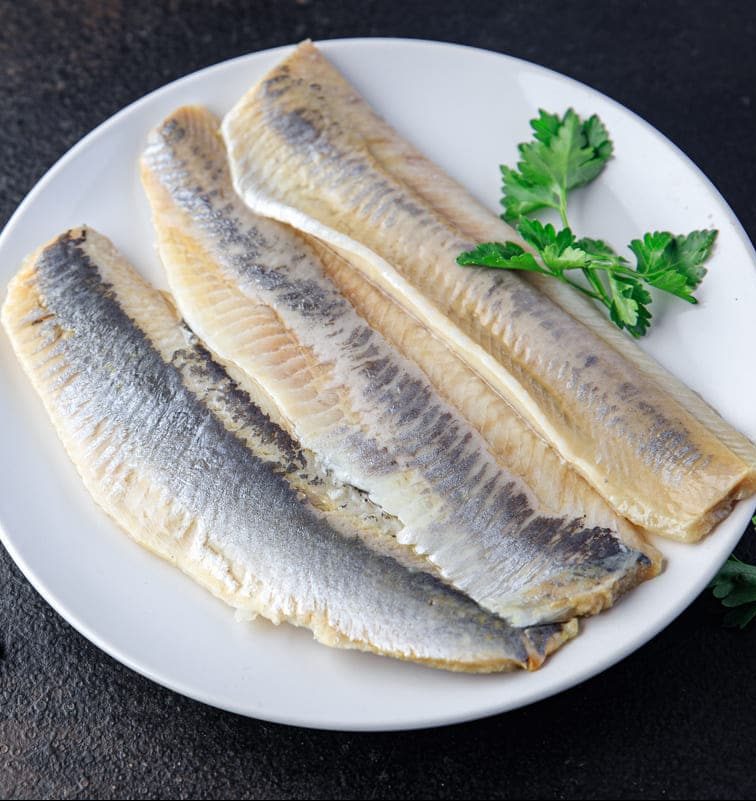
Spawning and Growth
The breeding season of hake typically takes place in the late spring or early summer in the Northern Hemisphere and varies in occurrence, depending on the species affected.
The female hake can release up to 9 million eggs in a single spawning season. These eggs are buoyant and develop near the surface. Male hake typically guards the eggs until they hatch. After hatching, the larvae are carried by ocean currents until they reach coastal areas and estuaries. They mature in 18-36 months upon reaching coastal regions, and the hake fish drift to deeper offshore waters.
Migration of hake is typically seasonal, with coastal species migrating offshore in the winter and moving closer to shore in the summer. On the other hand, offshore species stay in deep waters throughout their life cycle.
Life Cycle of Hake
Hake has a lifespan of 10-13 years, with some species living up to 20 years. The life cycle usually completes within one year, and they reach maturity at 1-4 years old, depending on the species.
Classification
Classification of a European Hake: Actinopterygii (class) and Merlucciidae (family).
Among the most extensive demersal fisheries in EU waters, hake dominates in various northeastern Atlantic fisheries, along with cod, haddock and whiting.
Etymology
The name Hake comes from both the English and Nordic languages. The old Norse word haki may have inspired the name.
In Norse mythology, Hake, Haki, or Haco was a sea god who ruled Scandinavia. Haki also refers to the term ‘hook,’ which originally referred to someone involved in fishing. The two kinds of hake have a maritime connection!
Culinary Use of Fresh Hake
Hake fish are well-known for their delicate flavour and white flesh and can be frozen later. This fish is popular among cooks, and you can prepare it in numerous ways, such as soups, stews, steamed, fried, poached, or grilled.
UK consumers are still catching up to the deliciousness of fresh hake, limiting it to fish fingers, fish cakes, and a few other processed products. Haike can easily be transformed into a show-stopping dish with some simple preparation.
Significance
Hake is of paramount importance to the marine food web. They can do so due to their high mobility, ability to inhabit various coastal habitats, and tendency to feed on a wide array of prey. As a result, hake holds substantial economic benefits for fisheries worldwide and is ecologically significant.
Uses
Hake is a versatile fish that can be used in many different recipes. It pairs well with creamy or tomato-based sauces, herbs, and spices. It is often used in soups, stews, and casseroles and can also be grilled, baked, or pan-fried.
Popularity and availability
Today, hake continues to be enjoyed worldwide due to its unique taste and wholesome, high protein content. It makes its way into a wide range of dishes, such as Spanish and Portuguese cuisines.
Hake is a highly versatile fish, as it pairs well with various spices, herbs, and flavours and is cooked in many different ways. This seafood is prevalent in many parts of the world, including North and South America, Europe, and southern Africa.
It is available in several forms, such as fresh and frozen fillets, steaks, or cutlets. Moreover, fish is commonly used as an ingredient in soups, stews, fish tacos, ceviche, and fish and chips.
Nutritional Values
Hake Fish is an excellent source of essential vitamins and minerals, such as Vitamin B12, Vitamin D, Magnesium, Iron, and Potassium. Other nutrients in Hake Fish include zinc, iodine, and vitamins A and D.
In addition, Hake Fish is a reliable source of Omega-3 fatty acids, making it the most suitable choice for reducing fat intake. One serving (3.5 ounces) of Hake Fish provides 115 calories, 20 grams of protein and other critical nutrients, which equates to more than 20% of the recommended daily value.
Health Benefits
Hake fish’s many advantages include its nutritional value, as well as its taste and low environmental impact. Since it is sustainably managed, future generations will have access to this healthy, nutritious, and delicious fish.
Hake is a nutrient-rich fish that is loaded with vitamins and minerals. It is very low in calories, fat and cholesterol and is an excellent source of protein. Therefore, eating hake can provide numerous health benefits, including lowering blood pressure, promoting weight loss, improving heart health, and reducing inflammation.
Versatility
Hake is an abundant and versatile species of fish that has sustained large global populations for centuries and remains a popular choice of seafood. With vast fisheries in many countries, this species is a viable and sustainable option for many seafood lovers.
Hake is a highly versatile fish, as it pairs well with various spices, herbs, and flavours and can be cooked in many different ways. The fish is prevalent in many parts of the world, including North and South America, Europe, and southern Africa. It is available in several forms, such as fresh and frozen fillets, steaks, or cutlets. Moreover, it is often used as an ingredient in soups, stews, fish tacos, ceviche, and fish and chips.
Taste and Texture
Hake is a white fish with a thin and flaky texture. Fresh hake has a mild, sweet taste, making it an excellent alternative to cod or haddock in recipes. While the flavour is subtle, it can become ‘mushy’ if overcooked, so it is imperative to pay close attention to the cooking time.
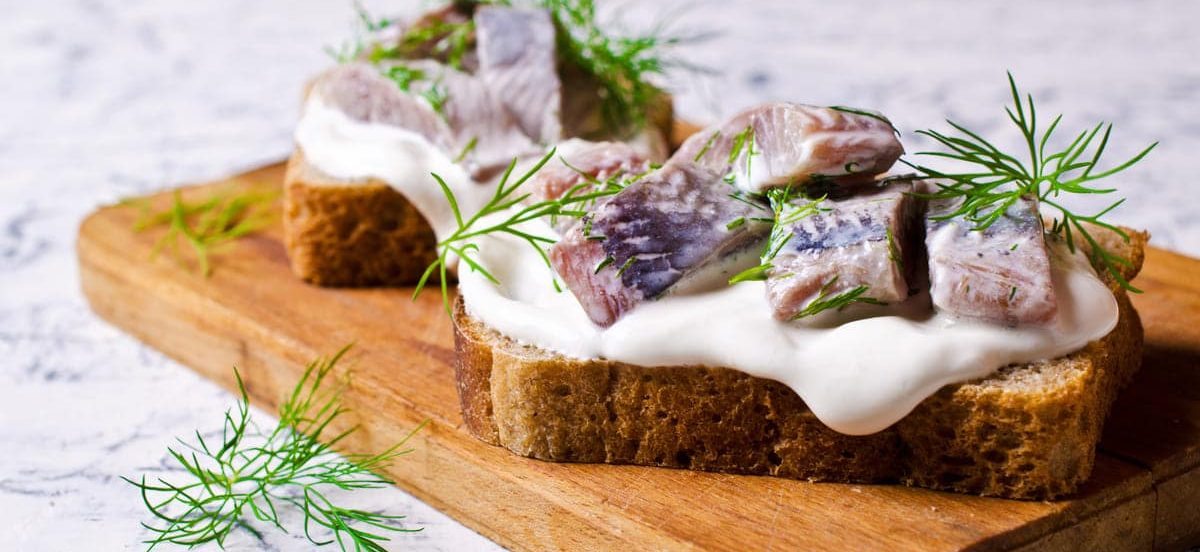
Cooking Hake
Hake can be prepared in multiple ways, such as baking, grilling, steaming, poaching, and boiling. Due to its mild taste, it is also often enjoyed with a range of flavourings and sauces, including garlic-infused lemon butter sauce, herb butter sauce, spicy Cajun sauce, soy sauce and sesame oil, and cilantro pesto.
Popular spices and herbs usually paired with hake include sea salt, smoked paprika, thyme, parsley, cumin, coriander, garlic, and oregano.
Hake fish can be eaten in many ways, including soups, stews, ceviche and fried, mixed with bacon or chorizo. It is available both fresh and frozen and should be handled with care when cooking as it is a delicate fish. To make sure the fish’s texture and flavour, please be careful not to overcook the hake.
Preparation
You can cook hake in a variety of delicious ways. Standard preparation methods include steaming, pan-frying, roasting, grilling, and deep-frying hake fish fingers. The skin of the hake should be left on while cooking as it helps to retain moisture. Using a non-stick pan and plenty of oil or butter when pan-frying is essential and only flip the fish once. The cooking time should generally be 8-10 minutes for every inch of thickness.
- Baking – To add flavour, some recipes call for marinating the fish in lemon juice, garlic, or other herbs and spices before cooking. Bake the hake in an oven preheated to 375F. Some recipes suggest wrapping the fish in foil beforehand to trap steam and ensure that you thoroughly cook the dish.
- Sauteing – When sautéing, olive oil or butter, as well as various herbs and spices, should be used. When steaming, it is necessary to ensure the hake is not overcooked, as too much heat will dry it out and make it unpalatable.
- Grilling – Grilling is the simplest and most flavorful cooking method. Handle the fish carefully to avoid breaking the flakes.
- Poaching – Poaching hake is a delicate cooking method that results in moist and tender fish. Simmer the fish in a shallow liquid at a low temperature for about 15 to 20 minutes or until the hake is cooked. Other methods of cooking hake include grilling, broiling, and deep-frying. Finally, before cooking, it is essential to remove any pin bones, as they can become challenging when cooked.
Serving
Hake can also be served in salads, filleted, fried, and served with rice and vegetables.
Side Dishes
Popular side dishes for hake fish depend on the type of seasoning used. You may eat and serve it with roasted potatoes, steamed vegetables, couscous, and sweet potato wedges, some of the most popular accompaniments. Cabbage, Brussels sprouts, carrots, and kale are excellent choices for vegetables too. Herbs like rosemary, basil, tarragon, and thyme also work wonders in bringing out the flavour of hake.
To add extra flavour, lemon, garlic, and capers work perfectly. Hake also pairs nicely with bold and acidic flavours, such as tomatoes, olives, and capers. Grains like rice, quinoa, and other grains are ideal accompaniments to hake dishes. Nuts and seeds like pine nuts, walnuts, and almonds add texture and flavour.
For a lighter side dish, steamed vegetables, salads, and pickles all pair wonderfully with hake. The delicate flavour of hake works best with similarly creamy flavours, such as fruit-based sauces, citrus fruits and their juices, herbs and dressings. Roasted or boiled potatoes, beans, or other hearty starches are excellent options for a more substantial dish. Creamy or cheesy sauces plus sauces with herbs finish off the dish and add an extra layer of flavour.
By carefully selecting side dishes and seasoning combinations, hake can be transformed into a delicious and easy-to-prepare meal. With an array of flavours and textures to choose from, the possibilities are almost endless.
Suitable Sauces & Spices
Sauces like romesco, salsa, beurre blanc, and chimichurri are all popular options for hake dishes.
Popular Recipes
For those looking to explore varied fish recipes, hake can be a delicious substitute for cod or haddock.
Popular dishes worldwide include Italian Pesce all Acqua Pizza, Portuguese Bacalhau com Natas and Indian Fish Curry. Additional popular Hake recipes include Hake Fish Fillet with Couscous and Grilled Hake with Chilli and Lemon. For a more subtle taste, pair these recipes with mild flavours.
Cultural Uses
Hake has been famous for its inclusion in recipes and commercial fishing for centuries. They are also well-suited to recreational angling but are difficult to catch due to their habits and invisibility in the water.
Hake is a significant source of food and livelihood for numerous cultures, and their continued health is crucial for the species’ sustainability. Research advances have granted further understanding of the biology and fisheries of the species, allowing for effective management of hake populations.
Conclusion
Hake’s variety of cooking methods and flavourings makes it a versatile and delicious fish that both experienced and novice cooks will enjoy. Its mild taste and a wide variety of accompaniments and seasonings make it suitable for creating creative dishes with interesting and complex flavours and textures.
